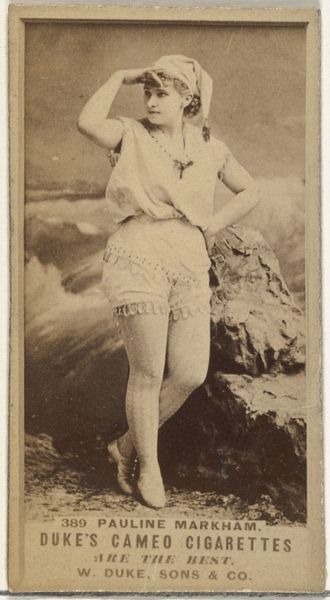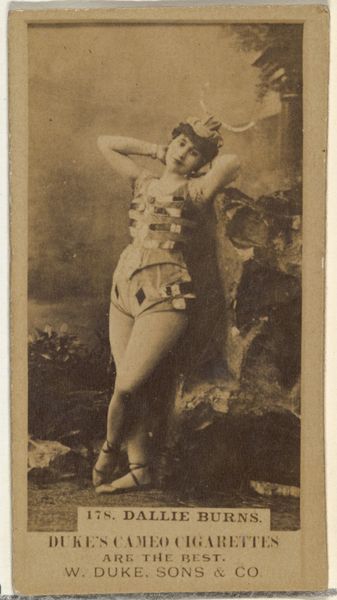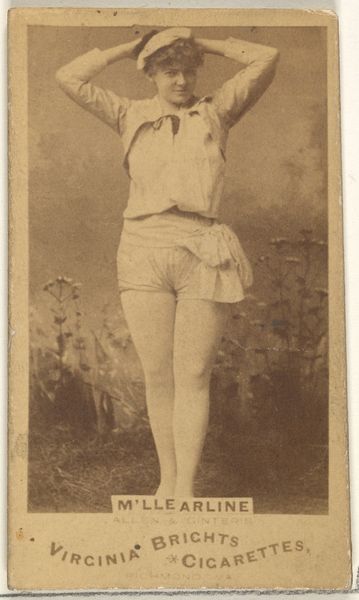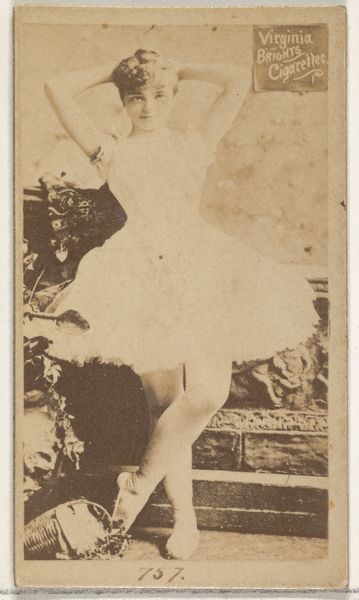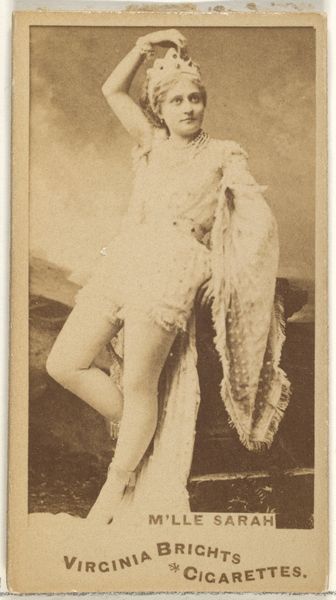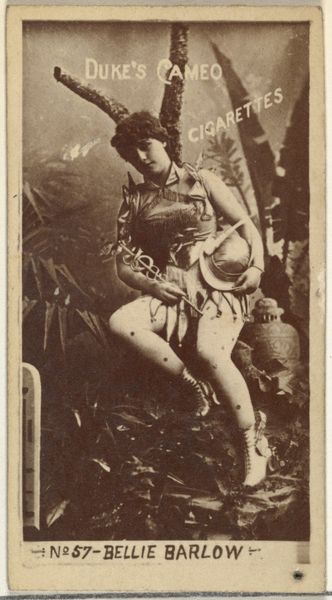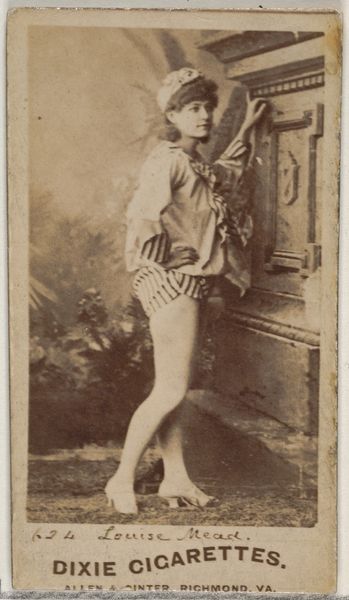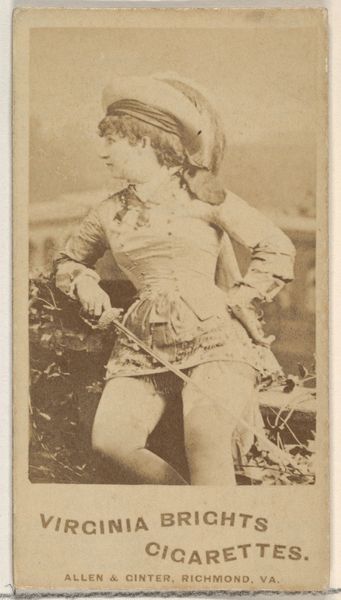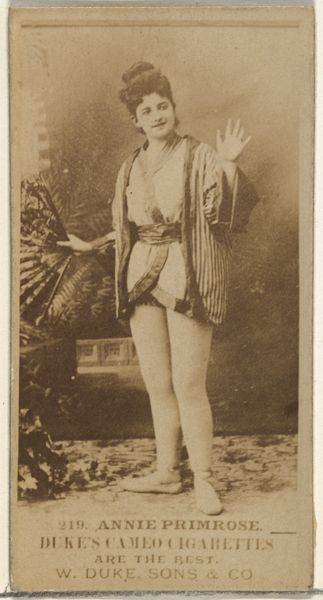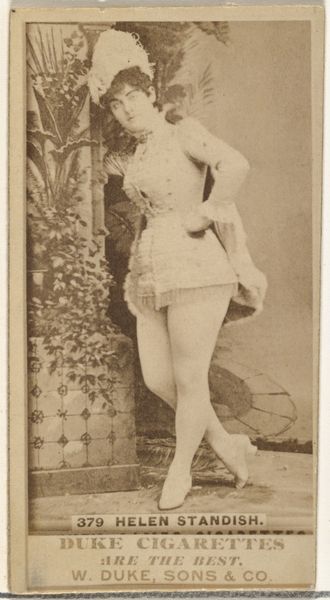
Card Number 617, Hattie Robins, from the Actors and Actresses series (N145-3) issued by Duke Sons & Co. to promote Cross Cut Cigarettes 1880s
0:00
0:00
drawing, print, photography
#
portrait
#
drawing
# print
#
figuration
#
photography
Dimensions: Sheet: 2 11/16 × 1 3/8 in. (6.8 × 3.5 cm)
Copyright: Public Domain
Curator: This is card number 617 in the Actors and Actresses series, produced by W. Duke, Sons & Co. in the 1880s to promote Cross Cut Cigarettes. The subject is Hattie Robbins, posed rather curiously I might add, on this advertising card now residing at the Metropolitan Museum of Art. Editor: What strikes me immediately is this sense of casual theatricality. It feels almost dreamlike with that hazy sepia tone. And that odd little rocky outcropping she is perched on... Curator: Indeed. The photographic print situates her in this fabricated landscape. Cigarette cards like these served as both commercial advertisement and collectors' items, reflecting a fascination with celebrity and the emerging culture of mass consumption in late 19th century America. It raises questions of the male gaze. Editor: You’re right! I feel like I’m glimpsing her between acts, catching her off guard. Her costume looks… unfinished somehow? Is she about to go swimming, or is this some playful performance? There’s an ambiguity here that I find so engaging. Curator: And considering that actresses navigated complex power structures, being both performers and commodities for public consumption, such photography further blurred boundaries of autonomy. Note how it relies on idealized portrayals while marketing an addictive product. This encapsulates several conflicts. Editor: I hadn’t thought about it like that, but it’s true! And what’s almost comical about this card is how absurd the pairing feels to me today. "Buy our cigarettes and perhaps you too can attain this strange, semi-aquatic, barefoot, famous yet ambiguous status.” There's something darkly amusing in the blatant appeal to aspiration! Curator: It demonstrates perfectly how even ephemeral cultural products contain embedded assumptions about gender, class, and desire. Examining these promotional items provides crucial insight into broader social dynamics and unspoken tensions present in the society of the period. Editor: It’s wild how a simple sepia photo stuck on a cigarette card can hold so much more. What once may have felt inconsequential now offers a lens into ourselves! Curator: Indeed. This modest portrait highlights ongoing, pertinent dialogues about representation, marketing, and historical narrative.
Comments
No comments
Be the first to comment and join the conversation on the ultimate creative platform.

